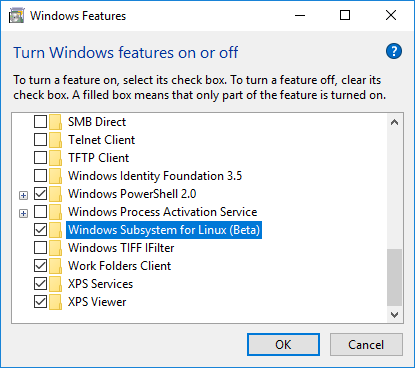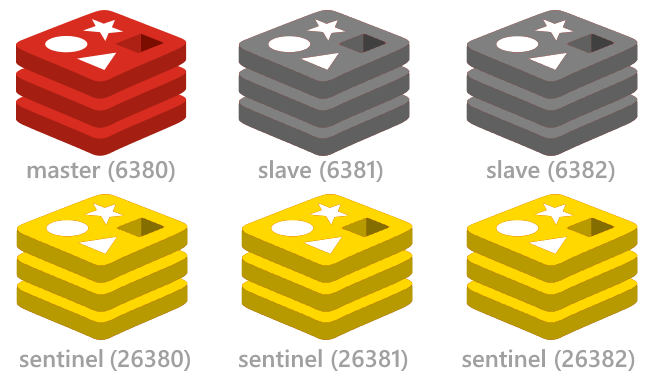Redis for Windows 4.0.2.3 (alpha)
This 4.0.2.3 release is still an alpha version, but contains enhancements and fixes for:
- #14: decrease logging verbosity of some cluster-related messages
- #23: ZRANK/ZREVRANK bugfix (win-port only)
- failed unit tests (bdcf80e).
Alpha version of Redis 4.0.2 for Windows.
Redis 4.0.2 for Windows is a merge of Windows-specific changes from latest (unsupported) 3.2.100 release from MSOpenTech and Redis 4.0.2 and this alpha release consists of:
- all Redis 4.0.2 features except modules,
- all executables of Redis (redis-server, redis-cli, redis-benchmark, redis-check-aof, redis-check-rdb).
Main difference to official Redis 4.0.2 (except no support for modules at the moment) is old version of jemalloc-win dependency, which is planned to be updated to the same version in beta release.
tporadowski released this Mar 26, 2018 · 16 commits to win-4.0.2 since this release
Redis for Windows 4.0.2.2 (alpha)
This 4.0.2.2 release is still an alpha version, but contains a fix to issue #12 (crash when rewriting AOF file — this issue was specific to Windows port only).
Alpha version of Redis 4.0.2 for Windows.
Redis 4.0.2 for Windows is a merge of Windows-specific changes from latest (unsupported) 3.2.100 release from MSOpenTech and Redis 4.0.2 and this alpha release consists of:
- all Redis 4.0.2 features except modules,
- all executables of Redis (redis-server, redis-cli, redis-benchmark, redis-check-aof, redis-check-rdb).
Main difference to official Redis 4.0.2 (except no support for modules at the moment) is old version of jemalloc-win dependency, which is planned to be updated to the same version in beta release.
tporadowski released this Mar 17, 2018 · 20 commits to win-4.0.2 since this release
Redis for Windows 4.0.2.1 (alpha)
This 4.0.2.1 release is still an alpha version, but contains a fix to issue #11, which was related to sending back larger amounts of data to Redis clients (this issue was specific to Windows port only).
Note: If you have installed the previous 4.0.2 version — please back up your config files and uninstall it first.
Alpha version of Redis 4.0.2 for Windows.
Redis 4.0.2 for Windows is a merge of Windows-specific changes from latest (unsupported) 3.2.100 release from MSOpenTech and Redis 4.0.2 and this alpha release consists of:
- all Redis 4.0.2 features except modules,
- all executables of Redis (redis-server, redis-cli, redis-benchmark, redis-check-aof, redis-check-rdb).
Main difference to official Redis 4.0.2 (except no support for modules at the moment) is old version of jemalloc-win dependency, which is planned to be updated to the same version in beta release.
Redis client for windows
This project contains the binary releases of MS Open Tech redis port of windows as well as a vagrant configuration for redis letting you run the native version of Redis in a Virtual Box VM.
Whilst it’s recommended to use Redis on Linux in production, it is often useful for developers on Windows platforms to have their own local version of redis running to develop with.
The 3 most popular ways of running redis on windows is to use the binary releases of Microsoft’s native port of redis, but as this is an unofficial port it always lags behind the latest official development of redis on Linux/OSX.
Thanks to Vagrant you can choose to run the latest linux version inside a Virtual Box Linux VM where you’ll be able to run the official native version of redis.
Or if you have the latest version of Windows 10 you can install Bash on Ubuntu on Windows which will let you run the official version of Redis on Ubuntu on Windows 🙂 This is our preferred approach as it lets you run native Ubuntu binaries on Windows more efficiently than running Linux in a VM:
Option 1) Install Redis on Ubuntu on Windows
- From Start, search for Turn Windows features on or off (type turn )
- Select Windows Subsystem for Linux (beta)
Once installed you can run bash on Ubuntu by typing bash from a Windows Command Prompt. To install the latest version of Redis we first need to install some prerequisites:
Then follow the official installation guide to download, build and install the latest stable version. NOTE: Installing the binaries using make install will not work. You need to copy them manually to /usr/bin (just like described in the guide, except that they use /usr/local/bin — which is the problem).
You’ll then be able to launch redis with:
Which will run redis in the background freeing your shell so you can play with it using the redis client:
Which you can connect to from within bash or from your Windows desktop using the redis-cli native Windows binary from MSOpenTech.
Option 2) Running the latest version of Redis with Vagrant
2. Download the vagrant-redis.zip vagrant configuration
3. Extract vagrant-redis.zip in any folder, e.g. in c:\vagrant-redis
4. Launch the Virtual Box VM with vagrant up
This will launch a new Ubuntu VM instance inside Virtual Box that will automatically install and start the latest stable version of redis.
The vagrant configuration was originally from JasonPunyon/redishobo and has been modified to use the latest stable release of Redis.
Option 3) Running Microsoft’s native port of Redis
These 64-bit binary releases are created by building the Microsoft’s native port of redis which have also been published on NuGet, but as it’s more convenient we provide a zip of the 64-bit binaries here.
MS Open Announcements
Current Version: 3.0.503 (June 28, 2016)
1. Download the redis-latest.zip native 64bit Windows port of redis
2. Extract redis64-latest.zip in any folder, e.g. in c:\redis
3. Run the redis-server.exe using the local configuration
4. Run redis-cli.exe to connect to your redis instance
5. Start playing with redis 🙂
The MSOpenTech of Redis adds some useful extensions for better integration with Windows:
Running Redis as a Service
If you installed Redis using the MSI package, then Redis was already installed as a Windows service. Nothing further to do. If you would like to change its settings, you can update the redis.windows-service.conf file and then restart the Redis service (Run -> services.msc -> Redis -> Restart).
During installation of the MSI you can either use the installer’s user interface to update the port that Redis listens to and the firewall exception or run it silently without a UI. The following examples show how to install from the command line:
default install (port 6379 and firewall exception ON):
set port and turn OFF firewall exception:
set port and turn ON firewall exception:
install with no user interface:
If you did not install Redis using the MSI package, then you still run Redis as a Windows service by following these instructions:
In order to better integrate with the Windows Services model, new command line arguments have been introduced to Redis. These service arguments require an elevated user context in order to connect to the service control manager. If these commands are invoked from a non-elevated context, Redis will attempt to create an elevated context in which to execute these commands. This will cause a User Account Control dialog to be displayed by Windows and may require Administrative user credentials in order to proceed.
Installing the Service
This must be the first argument on the redis-server command line. Arguments after this are passed in the order they occur to Redis when the service is launched. The service will be configured as Autostart and will be launched as «NT AUTHORITY\NetworkService». Upon successful installation, a success message will be displayed and Redis will exit.
This command does not start the service.
Uninstalling the Service
This will remove the Redis service configuration information from the registry. Upon successful uninstallation, a success message will be displayed and Redis will exit. This does command not to stop the service.
Starting the Service
This will start the Redis service. Upon successful startup, a success message will be displayed and Redis service will be started.
Stopping the Service
This will stop the Redis service. Upon successful termination, a success message will be displayed and Redis will exit.
Naming the Service
This optional argument may be used with any of the preceding commands to set the name of the installed service. This argument should follow the service-install, service-start, service-stop or service-uninstall commands, and precede any arguments to be passed to Redis via the service-install command. The following would install and start three separate instances of Redis as a service:
Redis Vue is a simple, lightweight, versatile Redis Admin UI developed using Vue and ServiceStack .NET Core Web Apps. It supports Redis’s core Strings, Lists, Sets, Sorted Sets and Hash data structures and custom Redis commands with its entire functionality contained in a single /app/index.html using the dynamic ServiceStack Templates language, making it easy to customize and further enhance.
Redis React is a simple user-friendly UI for browsing data in Redis servers which takes advantages of the complex type conventions built in the ServiceStack.Redis Client to provide a rich, human-friendly UI for navigating related datasets, enabling a fast and fluid browsing experience for your Redis servers.
Windows, OSX and Linux downloads available from Redis React Home Page
See the redis config project for a quick way to setup up the minimal highly available Redis Sentinel configuration including start/stop scripts for instantly running multiple redis instances on a single (or multiple) Windows, OSX or Linux servers.
About
Vagrant redis configuration and the binary releases of MS Open Tech redis port of windows
e-Book — Redis in Action
This book covers the use of Redis, an in-memory database/data structure server
A.3.2 Installing Redis on Windows
You can download a moderately out-of-date precompiled version of Redis for 32-bit
and 64-bit Windows thanks to Dusan Majkic from his GitHub page: https://github.com/dmajkic/redis/downloads. Go ahead and do that now.
After you download Redis, you’ll need to extract the executables from the zip file.
As long as you’re using a version of Windows more recent than Windows XP, you
should be able to extract Redis without any additional software. Do that now.
After you’ve extracted either the 32- or 64-bit version of Redis to a location of your
choice (depending on your platform and preferences; remember that 64-bit Windows
can run 32- or 64-bit Redis, but 32-bit Windows can only run 32-bit Redis), you can
start Redis by double-clicking on the redis-server executable. After Redis has
started, you should see a window similar to figure A.1.
Now that Redis is up and running, it’s time to download and install Python.


By continuing to use this site, you consent to our updated privacy agreement as described here. You can change your cookie settings at any time as described here but parts of our site will not function correctly without them.
TRY REDIS ENTERPRISE CLOUD FREE
Redis Enterprise Cloud provides complete automation of day-to-day database operations. Start now with 30MB of free storage.
© 2020 Redis Labs. Redis and the cube logo are registered trademarks of Redis Labs Ltd.






